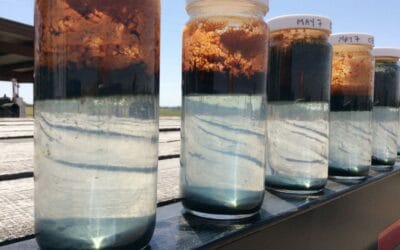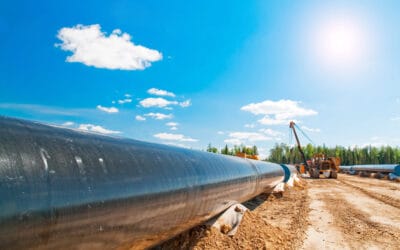What is an orphan well and why should you care?
Orphaned or abandoned wells are oil and/or gas wells that have been abandoned by fossil fuel extraction industries. These wells may have been deactivated because of economic viability, failure to transfer ownerships, or neglect and thus no longer have legal owners responsible for their care.
A $560 million initial grant from President Biden’s Bipartisan Infrastructure Law has been given to 24 states to start work on plugging, capping, and reclaiming these abandoned oil and gas wells. Over 10,000 high-priority well sites across the nation are available for urgent cleanup activities, and many more are planned for future action, according to eligible states.
Many of these abandoned oil and gas wells are contaminating yards, parks, and public places. Given that methane is more than 25 times more effective than carbon dioxide at trapping heat in the atmosphere, many of these unplugged wells pose a substantial safety risk in addition to contributing significantly to climate change. The unprecedented investments made to clean up these dangerous sites will spur economic growth and regeneration, produce well-paying union jobs, and lessen harmful methane leakage.
Prioritizing which wells to fix first and how to budget have emerged as important obstacles as governments finalize their plans to use the funds. On paper, capping wells is simple; to keep methane and other compounds from escaping into the environment, a succession of cement plugs are used. Each well in Pennsylvania will cost about $33,000 to plug. However, the process of sealing a well can be expensive in some situations, costing millions of dollars, depending on the well’s design, age, geology, and a host of other considerations.
Quantity over Quality?
When deciding which wells to treat first, states consider several characteristics, including age, integrity, leakage, surface contamination, emissions, and proximity to sensitive areas. Texas, for instance, ranks orphan wells according to their risk to individuals or the environment using the Railroad Commission system.
Effective and economical operations are essential because the funds’ primary objective is to plug as many of the 130,000 known orphan wells that are currently in existence as possible. While low-bid contracts may initially save money, experience is crucial for successfully plugging wells. Experienced pluggers will charge more for their services but are much less likely to make expensive errors that could drive up costs.
Sharing Liability
A corporation going bankrupt without properly plugging and abandoning a well results in an orphan well, which places the burden of decommissioning the well on the state. Historically, state orphan well programs have hired service businesses with the necessary experience to plug orphan wells. In the past, these contracts left the state with responsibility for the well’s liabilities, but several governments are now exploring transferring that responsibility to the contractor in an effort to encourage service providers to operate more efficiently.
On the surface, this may seem like a good way to stretch the budget as far as possible, but it may lead to veteran plugging companies passing on the job and it instead going to less-experienced companies. From there, the waterfall effect continues as these businesses incur higher expenses, which don’t directly affect the state but could lead to the contractor’s bankruptcy and reassignment of responsibility to the state.
Jobs, Jobs & More Jobs
According to preliminary projections, the plan might lead to the creation of more than 30,000 jobs and offer people who are dependent on a notoriously cyclical industry a safety net. Finding assistance to increase the number of rig crews capable of handling this work, however, could be difficult in the short future. To keep bids low and guarantee the most wells are plugged, it is essential to encourage as many businesses as possible to take on this work. Given the current increase in drilling activity, rigs and crews have already been identified in some basins as a major bottleneck.
Of states eligible for funding, 22 have been allocated $25 million each in Initial State Grants. Arkansas and Mississippi will receive $5 million each to support methane measurement and begin plugging wells.
The number of wells chosen by each qualified state for plugging and remediation with first grant funding is shown in this list. The number of wells varies depending on factors like distance from the nearest population centre, depth of the well, site conditions, and previous activity at the well site, as well as other state factors like the size of the workforce and whether the state has pre-existing contracts for well plugging.
Where We Come In
Aimsio is a field management software designed to quickly plan projects, dispatch resources, and digitally capture activities such as field tickets, LEMs, forms, and timesheets. With the upcoming influx of jobs, job sites, and capital, Aimsio can help prime contractors remain confident that any and all mandates to safely decommission and remediate orphan wells, facilities and pipelines, are being met as efficiently as possible (while managing a safe work site).
Let’s work together to safely decommission and remediate orphan wells, facilities and pipelines, as efficiently as possible.




